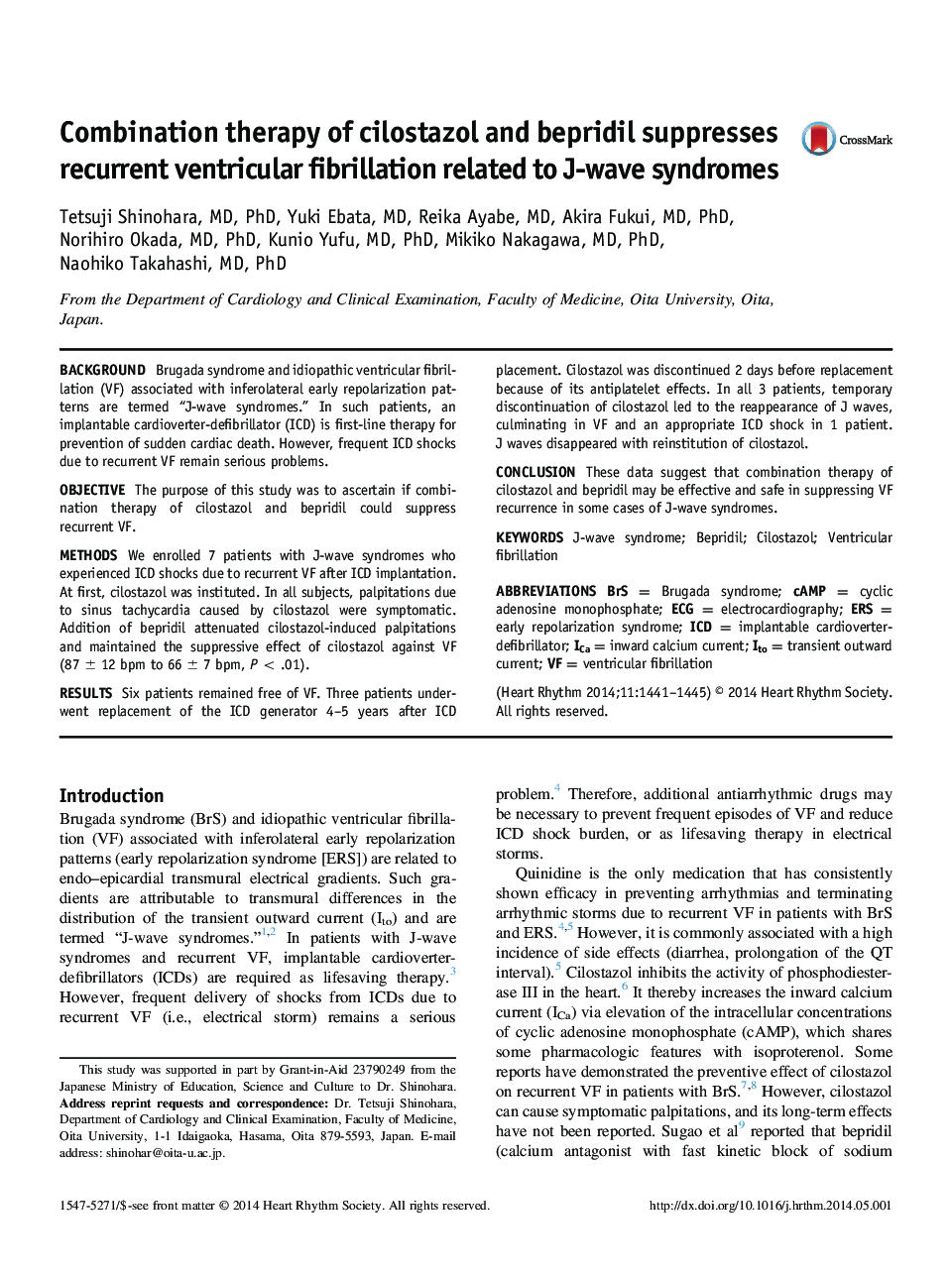| Article ID | Journal | Published Year | Pages | File Type |
|---|---|---|---|---|
| 2922039 | Heart Rhythm | 2014 | 5 Pages |
BackgroundBrugada syndrome and idiopathic ventricular fibrillation (VF) associated with inferolateral early repolarization patterns are termed “J-wave syndromes.” In such patients, an implantable cardioverter-defibrillator (ICD) is first-line therapy for prevention of sudden cardiac death. However, frequent ICD shocks due to recurrent VF remain serious problems.ObjectiveThe purpose of this study was to ascertain if combination therapy of cilostazol and bepridil could suppress recurrent VF.MethodsWe enrolled 7 patients with J-wave syndromes who experienced ICD shocks due to recurrent VF after ICD implantation. At first, cilostazol was instituted. In all subjects, palpitations due to sinus tachycardia caused by cilostazol were symptomatic. Addition of bepridil attenuated cilostazol-induced palpitations and maintained the suppressive effect of cilostazol against VF (87 ± 12 bpm to 66 ± 7 bpm, P < .01).ResultsSix patients remained free of VF. Three patients underwent replacement of the ICD generator 4–5 years after ICD placement. Cilostazol was discontinued 2 days before replacement because of its antiplatelet effects. In all 3 patients, temporary discontinuation of cilostazol led to the reappearance of J waves, culminating in VF and an appropriate ICD shock in 1 patient. J waves disappeared with reinstitution of cilostazol.ConclusionThese data suggest that combination therapy of cilostazol and bepridil may be effective and safe in suppressing VF recurrence in some cases of J-wave syndromes.
